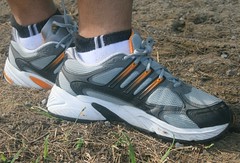As mentioned in the previous post, any factor that directly affects a process if its quantity is changed is called the LIMITING FACTOR.

By looking at graph 1, we can see that the rate of photosynthesis increases as the light intensity increases (0 to A). We say that light intensity is the LIMITING FACTOR. Beyond point A, light intensity is no longer the LIMITING FACTOR since the rate remains constant even though the light intensity increases. In this case we have to consider other factors that could cause the rate to become constant (A to B).
Graph 2 shows that the rate does not increase so much despite the temperature being increased from 20 to 30 degree celsius (with the carbon dioxide being kept constant). This means that temperature is not the actual LIMITING FACTOR. But if the conditions are reversed, the temperature being constant and the carbon dioxide being increased from 0.03% to 0.13%, the rate increases (Look at graph 3). Both of these indicate that carbon dioxide concentration is the LIMITING FACTOR in A to B (Graph 1).
The LIMITING FACTOR in E to F (Graph 3) is the temperature. Increasing the temperature from 20 to 30 degree celsius causes an increase in the rate of photosynthesis (Look at graph 4) though the carbon dioxide concentration remains constant at 0.13%.

By looking at graph 1, we can see that the rate of photosynthesis increases as the light intensity increases (0 to A). We say that light intensity is the LIMITING FACTOR. Beyond point A, light intensity is no longer the LIMITING FACTOR since the rate remains constant even though the light intensity increases. In this case we have to consider other factors that could cause the rate to become constant (A to B).
Graph 2 shows that the rate does not increase so much despite the temperature being increased from 20 to 30 degree celsius (with the carbon dioxide being kept constant). This means that temperature is not the actual LIMITING FACTOR. But if the conditions are reversed, the temperature being constant and the carbon dioxide being increased from 0.03% to 0.13%, the rate increases (Look at graph 3). Both of these indicate that carbon dioxide concentration is the LIMITING FACTOR in A to B (Graph 1).
The LIMITING FACTOR in E to F (Graph 3) is the temperature. Increasing the temperature from 20 to 30 degree celsius causes an increase in the rate of photosynthesis (Look at graph 4) though the carbon dioxide concentration remains constant at 0.13%.
END OF CHAPTER 6

























